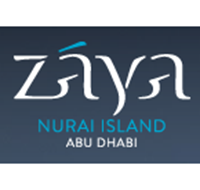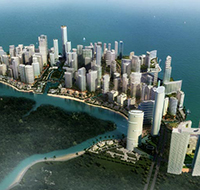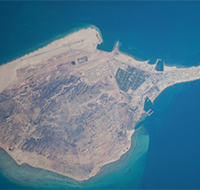30 Results found for 'parks in abu dhabi'
The Capital Garden
Open till 10:00 PM
The park, first built in 1976, comprised of a number of fountains and areas for relaxation. There was also a mosque and a restaurant. Capital Park is a wonderful city park and a children's favorite. At the entrance there are two beautiful figures. Within the park there are also a beautiful lake, well-maintained green lawns, and amazing fountains - all the more splendid at night. The garden, which is also known as Al Asema Park, covers 50,000-square metre garden and is located in one of the most densely populated areas of the city, and is bounded by Khalifa Bin Zayed Street, Hamdan Bin Mohammad Street, Fatima Bint Mubarak Street and Sultan Bin Zayed the First Street.
Al Khalidiya Park
Open till 10:00 PM
One of many popular, shady parks in Abu Dhabi, this park offers a respite from the heat of the Corniche in the summer months.There's a jogging track (20-minute circuit) and a variety of climbing frames and other attractions for youngsters.
Tourist Club Garden - Electra Park - Hazaa Park
Open till 10:00 PM
Abu Dhabi has more than 2,000 well-maintained parks and gardens. Electra park is one of the main parks in Abudhabi situated near by corniche. This park is specifically designed to provide playground, playpark, or play area to allow children to play.
Umm Al Emarat Park
Open till 10:00 PM
Umm Al Emarat Park in Abu Dhabi was first opened to visitors in 1982. It is one of the oldest and largest urban parks in Abu Dhabi. Umm Al Emarat Park is a park for all the people of Abu Dhabi. Connecting communities in a safe and secure environment.
The world's largest uninterrupted sand mass, the Rub Al Khali (Empty Quarter) will blow you away with massive expanses of awesome desert and enormous dunes. It’s a landscape of ever-changing endless dunes made famous by the British explorer Wilfred Thesiger and his Emirati and Omani companions in the 1940s and 50s.
Reem Island (Arabic: ????? ?????) is a natural island 600 metres off the coast of Abu Dhabi island. Sorouh Real Estate, Reem Investments, and Tamouh are independently developing parts of the island with projects like Shams Abu Dhabi. Reem Developers define the overall dimensions of the project as 6.5 million square metres and investment costs as exceeding $30 billion. The project has gained international interest as one of the first free zones in Abu Dhabi, where foreign nationals can buy property as leasehold. Located off the northeastern coast of Abu Dhabi city, it is a mixed purpose community with both residential and commercial units. The handing over of units in Al Reem Island was delayed due to a couple of reasons, but during the first quarter of 2011, the handing over process began.
Dalma is an Emirati island located in the Persian Gulf approximately 42 kilometres (26 mi) off the coast of Abu Dhabi and 116 kilometres (72 mi) from Doha. The Abu Dhabi Islands Archaeological Survey ADIAS carried out an initial archaeological survey of Dalma island in 1992. A total of more than 20 archaeological sites were identified on the island, ranging in time from the Neolithic (Late Stone Age). The population consists of about 10,000 inhabitants, most of whom are Arabs and Qatari who have been granted United Arab Emirates (UAE) nationality.


















